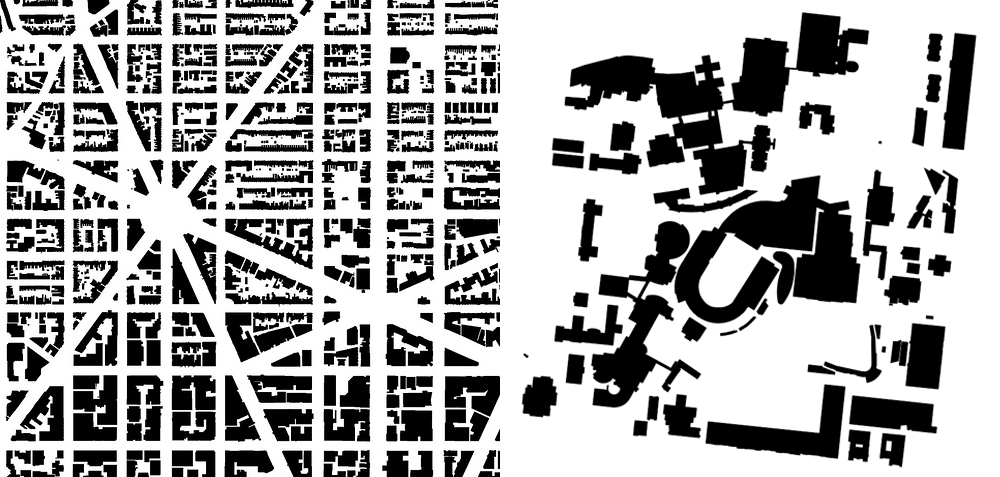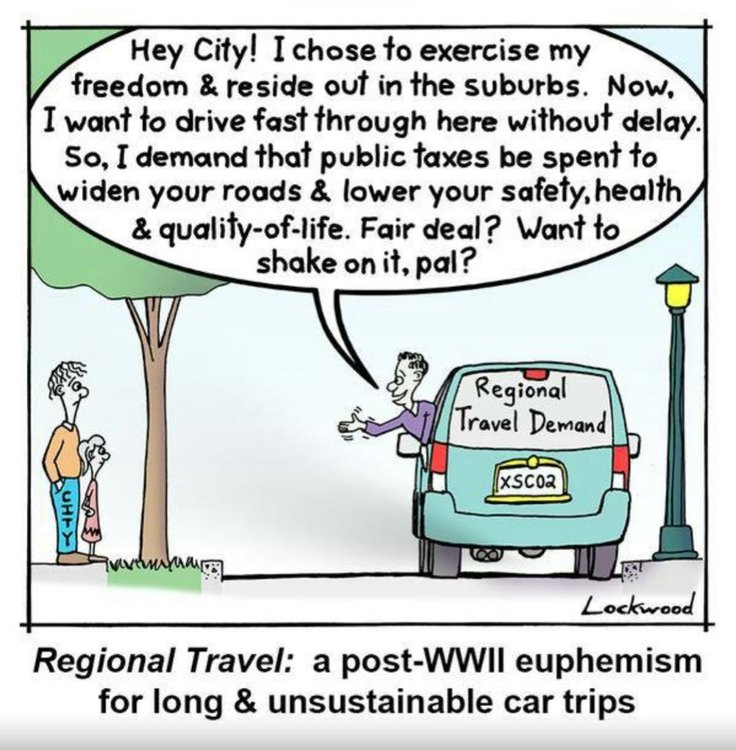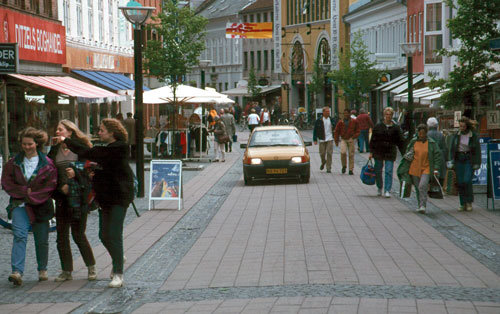Everything posted by jjakucyk
-
Cincinnati: General Transit Thread
That one block was OK, but the rest all the way to I-75 was really bad. I biked it a few times and had to weave a ton to keep out of the holes. https://goo.gl/maps/pkY1Evq9M9m
-
A Road Is A Road To Socialism Road
And don't forget, like I've said many times before, that the local street network sees little to no gas tax revenue, it's paid for out of general funds. Of course, a lot of people burn gas while driving on those streets, so they're double-subsidizing the highways.
-
Metro Cincinnati: Road & Highway News
I think Hopple Street had one too, but just the few blocks between the viaduct and I-75. The lower deck of the Western Hills Viaduct also had a reversible lane. Did Kellogg ever have one between Salem and I-275? It's one of those odd 2-lanes inbound, 1-lane outbound setups today.
-
Metro Cincinnati: Road & Highway News
Cranley: Parts of Columbia Pkwy. could be closed for 2 years https://www.wcpo.com/news/local-news/hamilton-county/cincinnati/cranley-city-manager-to-talk-columbia-pkwy-landslides Parts of Columbia Parkway could be closed for the next two years in order to stop recurring landslides, Mayor John Cranley said at a Wednesday news conference. "Officials will also consider reconfiguring Riverside Drive to accommodate for the loss of capacity along Columbia Parkway." Translation, remove the bike lanes and parking.
-
Cincinnati: Downtown: Court Street Developments and News
Damn Kroger's original Court Street street wall was completely flat and blank, that's tragic. The original design was clearly inspired by Lever House in NYC: https://en.wikipedia.org/wiki/Lever_House#/media/File:Lever_House_390_Park_Avenue.jpg My guess is that it was pretty grungy by the time of the redress, and they were probably getting killed by the heating and a/c bills. I think the tower redress is completely banal whereas the original design was more eye catching, whether you like it or not. They really screwed up the redesign of the base though. Yes they opened up Court Street some, but floors 2-3 are complete turds compared to what they were.
-
Cincinnati: Downtown: 1010 On The Rhine / Downtown Kroger
And if it was 60% parking garage.
-
Cincinnati: Downtown: The Blonde (Eighth & Main)
I can see my car.
-
Cincinnati Streetcar / The Connector News
Also no mention of turning on the signal preemption devices that have already been installed but which Cranley won't allow them to use. I think those are at Liberty and Central Parkway. $0
-
Cincinnati: Downtown: Fourth & Race (Pogue Garage) Redevelopment
So they had to put up a crane to put up the crane?
-
Cincinnati: University of Cincinnati: Development and News
George Washington University? DePaul University? Harvard? I'd call those more urban because they're completely integrated into the surrounding city fabric. Or are you using the term "microcosmic campus" to mean a self-contained campus separate from what's around it? UC is actually more like a typical rural campus in that respect, but with the interstitial spaces squeezed out. It's not really urban, it's just compact. While there's elements of urban principles in a few places, it's very disjointed and there's no consistency whatsoever in either the buildings or the public spaces. There's not enough room for the signature buildings to be objets d'art unencumbered by neighbors and viewable in-the-round. However despite the building density, it's still a suburban/rural paradigm of buildings floating in the landscape (of which there isn't enough to do properly) rather than a properly urban typology of the buildings defining street walls. Essentially the figure/ground diagram is wrong for the density. Look at the image below comparing Washington DC and UC. Can you tell where DC's streets are? How about UC's? While the spaces themselves are quite heavily designed, there's no organization to it like in DC or in any old city. McMicken Commons, the most formal open space on campus, is very poorly defined. Imagine UC with a network of small pedestrian access streets and a couple of monumental plazas or quads with the signature buildings facing those spaces but with a certain level of formality and decorum. That would be more properly urban.
-
Cincinnati: Downtown: 1010 On The Rhine / Downtown Kroger
"Court and Walnut Parking Garage and oh there's some other stuff in there too"
-
Cincinnati: Fountain Square: Development and News
Even if they did, real actual people would say Fountain Square. Just like real actual Chicagoans still say Sears Tower.
-
Cincinnati: University of Cincinnati: Development and News
Except that doesn't look as good in a landscape architect's portfolio.
-
Generic Infill Architecture
You don't have to look hard at all to find similarly overdone examples. So sadly, I don't think their examples are excessive. https://goo.gl/maps/oxJRC1RMpw32 https://goo.gl/maps/iXCuyWgarhs https://goo.gl/maps/NyFeuHq77ME2 Granted these may not be as overtly kitschy, but there's still plenty of "WTF is going on here?"
-
Cincinnati: Liberty Street Road Diet
I see, I thought "surrounding neighborhoods" meant like Mt. Auburn, Fairview, etc. Still, 32 for the 7-lane option (basically do-nothing) is discouraging.
-
Cincinnati: Liberty Street Road Diet
-
Cincinnati: Liberty Street Road Diet
Did Pastor end up voting no today?
- Cincinnati Streetcar tracks
- Cincinnati Streetcar tracks
-
ODOT Policy Discussion
Right, GPS takes care of the odometer and driving in other states or even potentially offroad (though I don't think either of those are really major concerns in aggregate). It is quite Big Brother-y though, which I do sympathize with. Simple odometer readings have the potential for fraud, but they can be policed to some extent. In states that have safety inspections, usually mechanic shops can issue the inspection certificates (yes, that's a form of corporate welfare but let's put that aside for the moment). So I wonder about requiring any mechanics shop, body shop, tow truck operator, lube shop, tire shop, etc., to report the mileage to a central database whenever they service a vehicle. That way there's a running tally over the year so that if an odometer is rolled back it can only be rolled back by a small amount before it starts to raise red flags. Even if that is a bit too invasive, I can see a situation where using a GPS tracker yields a discounted tax rate that can be paid monthly or quarterly, yearly payments at an inspection station are at the full if not a punitive rate to discourage it and pay back some of the fraud potential, and perhaps some mix of quarterly payments (either at an inspection station, or certified independent shop, or estimated with yearly verification) are somewhere in between. Basically you pay extra for better privacy, but going with more frequent payments/inspections still gets you a discount from the potentially fraud-rampant yearly odometer reading.
-
Cincinnati Streetcar / The Connector News
Right, and the "just missed" factor makes that huge, especially for someone fumbling with the fare machines.
-
ODOT Policy Discussion
The thing is it's not just about weight and damage. Think about how much *space* is needed to accommodate commuters at rush hour or around malls and into and out of downtowns. Plus, while heavy trucks may do orders of magnitude more damage to roadways, it doesn't cost orders of magnitude more to construct or repair them. For the most part, road depth is for trucks, but road width is for cars. They both have costs.
-
ODOT Policy Discussion
This illustrates why gas taxes are a bad way to fund highways (and remember, they almost exclusively go to highways, not local streets). The tax to pay for roads/streets/pavement should be different from the tax on gas. The former pays for pavement, the latter pays for the impacts of burning gas, whether environmental, militarily or whatever. Then you don't need special farm diesel, lawnmowers and generators don't pay for roads, and EVs don't get a free ride on the roads but aren't penalized either.
-
Walkable Communities
^ That's a problem with the design of the street itself. It's an environment where cars are dominant, and everything else is subservient, regardless of what the law says. That doesn't happen on streets like this:
-
Cincinnati Streetcar / The Connector News
The way to pitch it would be to point out that enabling the signal preemption that's already installed, plus some of the other recommended tweaks (I don't know what they all are or how expensive they might be, but they're just one-time things) is a less expensive way to improve headways and reliability without having to put more cars in operation. Of course more cars would still be better, and the fact that 3 cars are the most that have been run since opening day is criminal.








